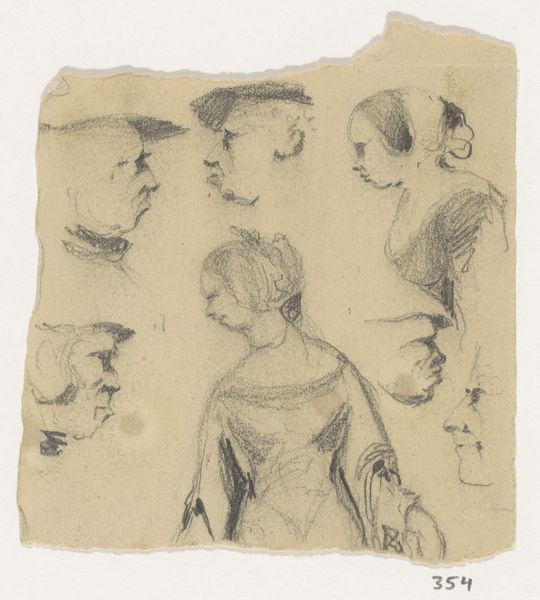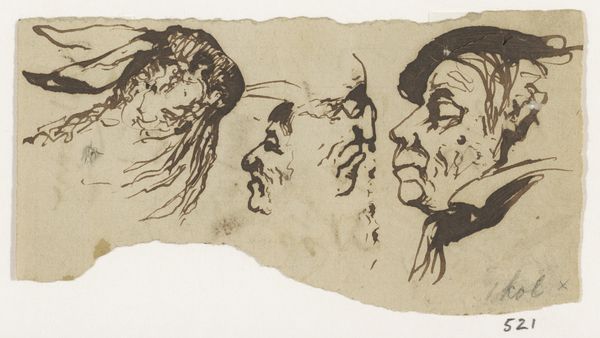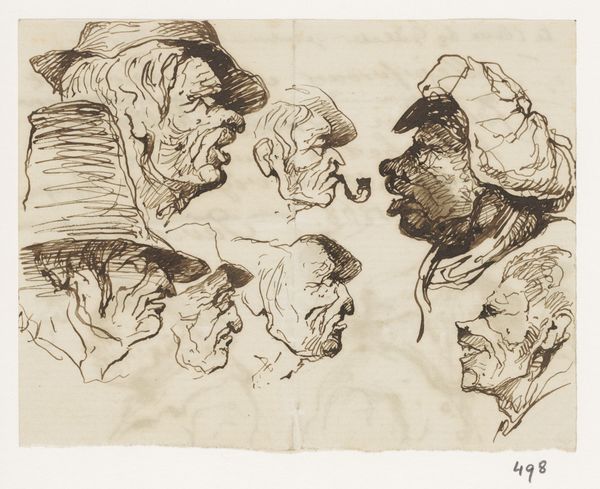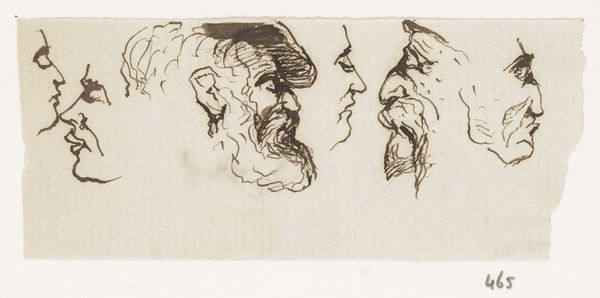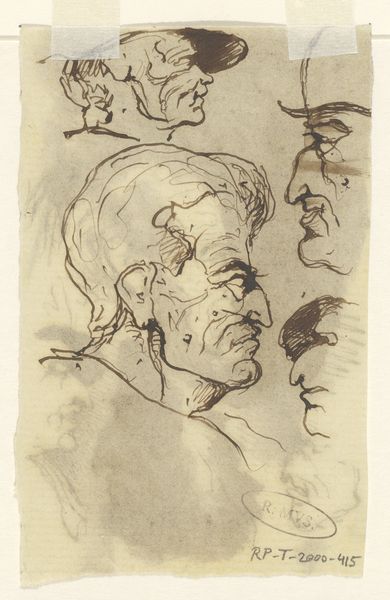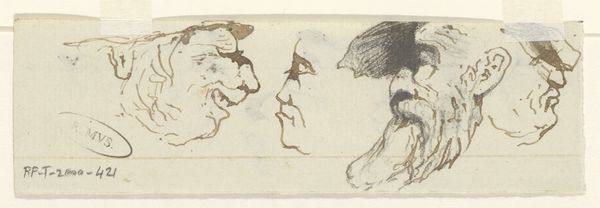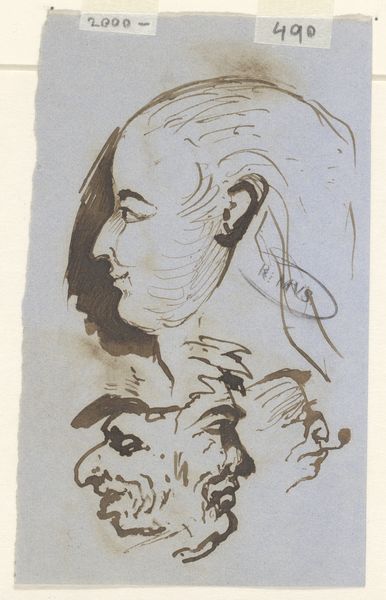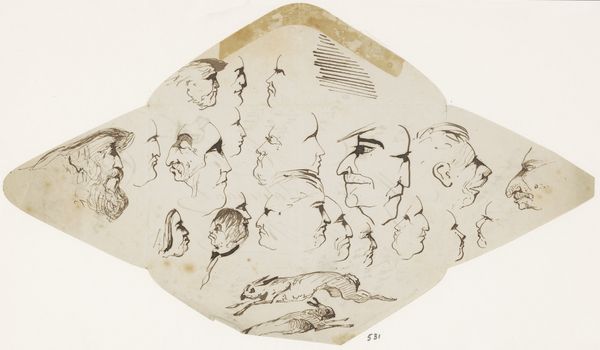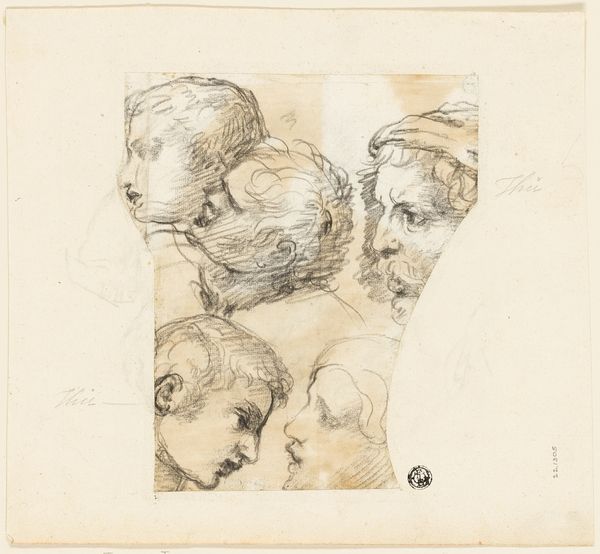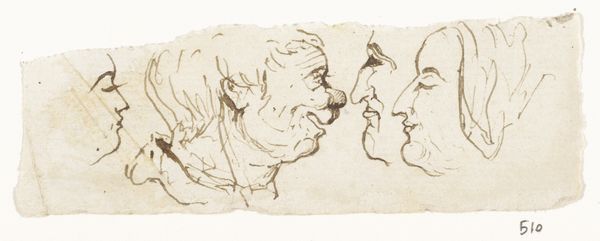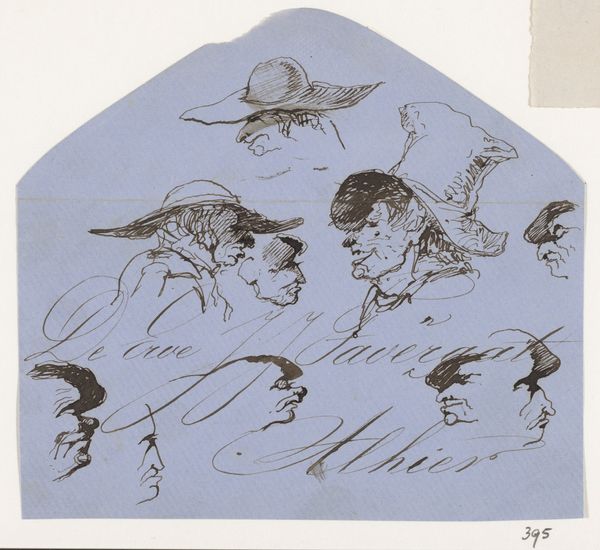
Dimensions: height 103 mm, width 63 mm
Copyright: Rijks Museum: Open Domain
Editor: This is “Koppen,” dating somewhere between 1840 and 1880, by Johannes Tavenraat, held here at the Rijksmuseum. It’s a collection of heads, or rather, profiles, sketched in ink. I'm struck by how the artist plays with caricature, almost exaggerating features. What do you see in this piece, particularly within its historical context? Curator: I see a window into 19th-century social observation. The exaggerated features aren't just playful; they’re potentially loaded with societal biases and power dynamics. Caricature, then as now, could be used to satirize, to demean, or to reinforce existing stereotypes about class, ethnicity, or even gender. Do you see how certain faces are rendered with more pronounced features than others? What might that signify? Editor: I hadn't really thought of it that way, but now that you mention it, there are definitely some faces that look more…severe than others. So, you're suggesting that these aren’t just random sketches, but possibly social commentary disguised as playful drawings? Curator: Exactly. These "types" often reflected and reinforced the prevailing social order. How might we interpret this today, given our heightened awareness of representation and social justice? Editor: I guess, viewed through that lens, the artwork becomes a bit uncomfortable. It’s not just a quaint sketchbook page; it's a record of how people were categorized and potentially judged in the 19th century. Curator: Precisely! Art often unwittingly reveals the biases of its time, prompting us to confront those historical realities and reflect on our own contemporary perspectives. It reveals the evolution of society itself. Editor: Wow, I’ll definitely never look at sketchbook art the same way. Thanks! Curator: My pleasure, this is what I hoped would be achieved, a new understanding!
Comments
No comments
Be the first to comment and join the conversation on the ultimate creative platform.
